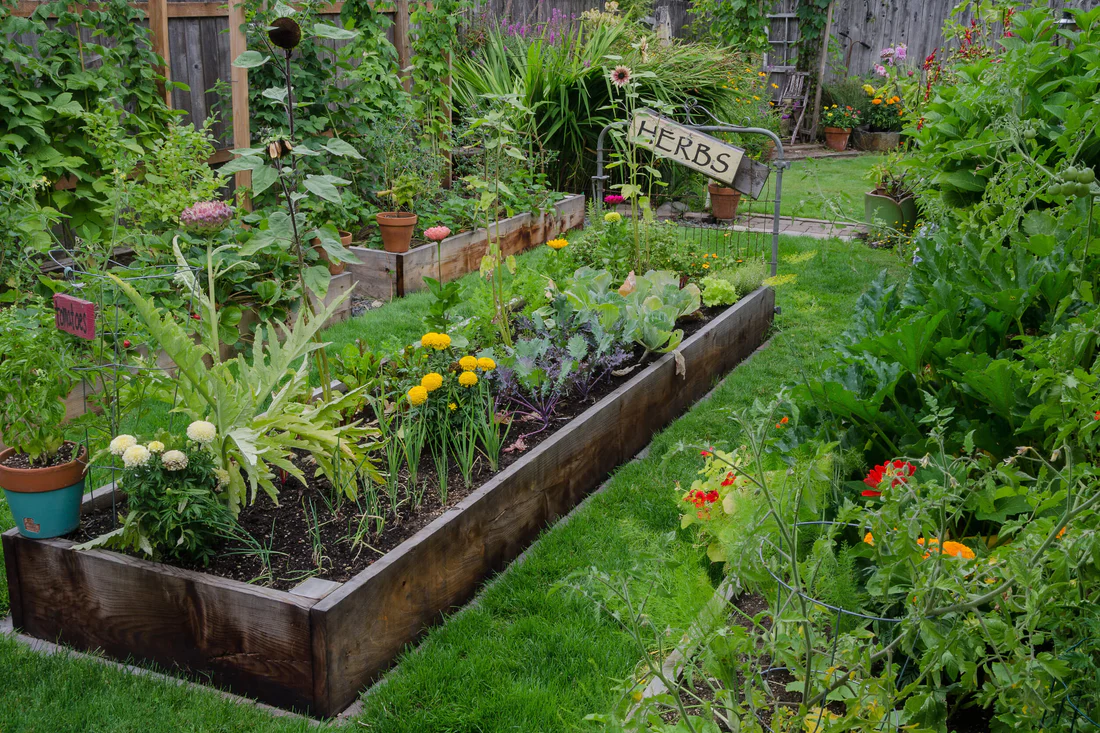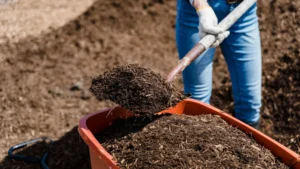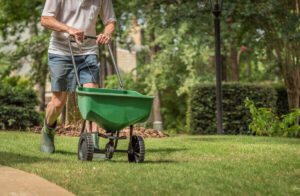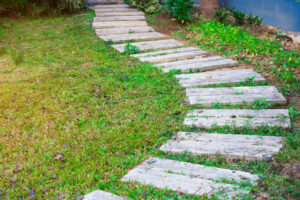Raised garden beds are an excellent way to enhance your gardening experience by improving soil quality, drainage, and plant health. Whether you’re a seasoned gardener or a beginner, building raised beds can provide a productive and aesthetically pleasing solution for growing vegetables, herbs, and flowers. This guide covers the best uses of raised garden beds, how to build them effectively, popular materials, costs, and frequently asked questions.
Benefits of Raised Garden Beds
Raised garden beds offer numerous benefits, making them a popular choice for gardeners across the US. They allow better control over soil quality, making it easier to provide the right nutrients and drainage conditions for plants. Elevated beds also simplify maintenance, reduce strain on the back and knees, and help minimize weed growth and pest problems. Furthermore, they can extend the growing season by warming up the soil more quickly in the spring.
Step-by-Step Guide to Building Raised Garden Beds
- Choosing the Right Location Select a spot with at least 6-8 hours of sunlight per day, ensuring good drainage and easy access for watering and harvesting.
- Determining the Size and Shape Standard dimensions are typically 4 feet wide and 6-12 inches deep, providing ample space for plant roots while allowing easy access from all sides.
- Selecting Materials Popular materials include untreated wood (cedar or redwood for durability), metal, composite materials, and concrete blocks or bricks.
- Assembling the Bed Cut materials to the desired size and assemble using screws or brackets, ensuring the frame is level and securely placed.
- Filling with Soil Use a balanced mix of topsoil, compost, and organic materials to create nutrient-rich planting conditions.
Materials for Raised Garden Beds
- Wood: Natural and aesthetic, cedar and redwood are commonly used due to their resistance to rot and insects.
- Metal: Durable and modern-looking, galvanized steel or corrugated metal beds are long-lasting but can heat up quickly.
- Composite Materials: A blend of wood fibers and plastic, offering durability and low maintenance.
- Concrete Blocks or Bricks: Provide a sturdy, long-lasting option and allow for creative shapes and designs.
Cost Estimation
The cost of raised garden beds varies depending on the materials and size:
- Budget-friendly options: $50 – $100 (basic wood or repurposed materials)
- Mid-range options: $100 – $300 (cedar wood or composite materials)
- High-end options: $300 – $500+ (metal or custom-designed beds)
Additional Considerations
Proper drainage is crucial to prevent waterlogging, which can be achieved by adding gravel or drainage holes at the bottom. Installing a drip irrigation system can help ensure consistent watering, while row covers or netting can protect plants from pests.

Raised Garden Bed Easy Instructions: A Step-by-Step Guide
Creating a raised garden bed is a simple and rewarding project that allows you to grow fresh vegetables, herbs, and flowers in a controlled environment. Raised garden beds improve soil quality, provide better drainage, and reduce strain on your back and knees. Whether you’re a beginner or an experienced gardener, follow these easy instructions to build your own raised garden bed.
Step 1: Choose the Right Location
Selecting the ideal location is crucial for the success of your raised garden bed. Choose a spot that receives at least 6-8 hours of direct sunlight daily, as most vegetables and flowers thrive in full sun. Ensure the area has good air circulation and is easily accessible for watering and maintenance.
Step 2: Gather Materials
To build a basic raised garden bed, you will need the following materials:
- Lumber: Cedar or redwood are excellent choices because they resist rot and insects. Common sizes are 2×6 or 2×12 boards.
- Screws or Nails: Galvanized screws or nails are recommended for durability.
- Soil Mix: A combination of topsoil, compost, and organic matter.
- Weed Barrier (optional): Landscape fabric or cardboard to prevent weeds.
- Measuring Tape and Saw: For cutting the boards to size.
Step 3: Determine the Size and Shape
A standard size for raised beds is 4 feet wide by 8 feet long with a depth of 6 to 12 inches. This width allows easy access from both sides without stepping into the bed, which can compact the soil.
Step 4: Assemble the Raised Bed
- Cut the Wood: Measure and cut the boards to your desired dimensions.
- Assemble the Frame: Lay out the boards in a rectangular shape and use screws or nails to secure the corners.
- Level the Ground: Clear the area of grass and debris to create a level surface for your raised bed.
- Place the Frame: Set the assembled frame in the desired location, ensuring it sits evenly on the ground.
Step 5: Prepare the Base
For better drainage and weed prevention, consider the following options:
- Lay down landscape fabric or cardboard to suppress weeds.
- Add a layer of gravel or coarse sand to promote proper drainage.
Step 6: Fill with Soil
Fill the raised bed with a nutrient-rich soil mix, which should include:
- Topsoil: Provides structure and minerals.
- Compost: Adds essential nutrients.
- Peat Moss or Coco Coir: Improves water retention.
Ensure the soil is loose and well-aerated to promote healthy root growth.
Step 7: Plant Your Garden
Now it’s time to plant! Choose plants suited for your climate and growing season. Arrange them according to their sunlight and spacing needs to maximize growth.
Step 8: Water and Maintain
Water your raised garden bed regularly, especially in the first few weeks after planting. Apply mulch to retain moisture and suppress weeds. Regularly check for pests and diseases to ensure healthy growth.
By following these easy instructions, you can build a functional and productive raised garden bed that enhances your outdoor space and provides a bountiful harvest. Happy gardening!
Transportable Raised Garden Bed Schematics
A transportable raised garden bed is a versatile and convenient solution for urban gardeners, renters, and anyone who wants the flexibility to move their garden as needed. Unlike traditional raised beds, transportable designs include wheels or lightweight materials that make relocation easy. Whether you want to maximize sunlight exposure or move your plants indoors during extreme weather, building a transportable raised garden bed is a great option. This guide provides detailed schematics and step-by-step instructions to help you create your own movable garden bed.
Benefits of a Transportable Raised Garden Bed
- Flexibility: Easily move your garden to follow sunlight or protect it from harsh weather conditions.
- Space Optimization: Ideal for patios, balconies, and small yards where space is limited.
- Accessibility: Can be positioned at an ergonomic height to reduce bending and back strain.
- Seasonal Gardening: Move the bed indoors during colder months to extend the growing season.
Materials Required for a Transportable Raised Garden Bed
Before you begin building your garden bed, gather the following materials:
- Lumber: Pressure-treated pine, cedar, or composite boards (1×6 or 2×6 size recommended).
- Wheels or Casters: Heavy-duty swivel casters with locks to ensure stability when stationary.
- Fasteners: Galvanized screws or bolts for durability.
- Liner (Optional): Landscape fabric or plastic liner to prevent soil leakage.
- Soil Mix: A combination of topsoil, compost, and peat moss for optimal plant health.
- Tools: Measuring tape, saw, drill, and screwdriver.
Transportable Raised Garden Bed Schematics and Dimensions
A common transportable garden bed size is 3 feet wide by 6 feet long and 12 inches deep. This size allows for ample planting space while remaining manageable for transport. The schematic consists of:
- Base Frame: A sturdy rectangle frame constructed from 2×6 boards.
- Legs with Wheels: Four wooden legs, each equipped with locking swivel casters for easy mobility.
- Side Panels: Made from wooden planks to enclose the soil securely.
- Bottom Support: Cross-bracing or plywood to support the weight of the soil and plants.
- Drainage System: Drill holes in the bottom for proper water drainage.
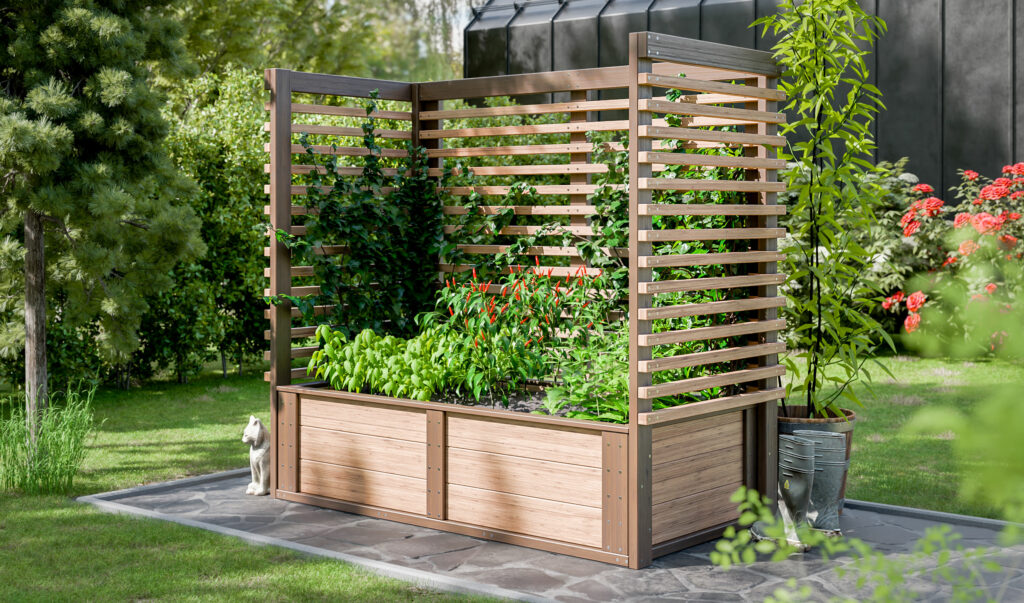
Step-by-Step Instructions to Build a Transportable Raised Garden Bed
- Measure and Cut the Wood: Cut the wood according to the desired dimensions of the base frame and side panels.
- Assemble the Frame: Attach the side panels to the base using screws or bolts to form a rectangular box.
- Install the Bottom Panel: Secure a plywood sheet or slats across the bottom to support the soil.
- Attach the Wheels: Fix the locking casters to the bottom of each leg to ensure easy movement.
- Add Liner: Line the interior with landscape fabric to contain soil and prevent leakage.
- Fill with Soil: Use a balanced mix of topsoil and organic compost for healthy plant growth.
- Plant Your Garden: Choose plants that suit your climate and the intended placement of the garden bed.
Maintenance Tips for Transportable Raised Garden Beds
- Secure the Wheels: Always lock the casters when the bed is stationary to prevent movement.
- Monitor Soil Moisture: Transportable beds can dry out more quickly due to exposure.
- Regular Inspection: Check wheels and fasteners for wear and tear to ensure structural stability.
- Adjust Placement: Move the bed to optimize sunlight exposure and protect plants from harsh conditions.
By following these schematics and guidelines, you can build a transportable raised garden bed that offers the perfect balance of mobility and functionality, providing a sustainable and adaptable gardening solution.
How to Build an Above Ground Raised Bed Garden: A Step-by-Step Guide
An above ground raised bed garden is an excellent solution for growing vegetables, flowers, and herbs in a controlled environment. It allows better soil quality, improved drainage, and easier maintenance compared to traditional in-ground gardens. Whether you have poor soil conditions or limited space, building an above ground raised bed garden provides a practical and efficient gardening option. Follow this guide to create your own raised garden and enjoy the benefits of fresh, homegrown produce.
Benefits of an Above Ground Raised Bed Garden
- Better Soil Control: Above ground beds allow you to fill them with nutrient-rich soil, promoting healthier plant growth and reducing weeds.
- Improved Drainage: Water drains more efficiently, preventing root rot and overwatering issues.
- Accessibility: Raised beds can be built at a comfortable height, reducing strain on the back and knees.
- Extended Growing Season: The soil warms up more quickly in raised beds, allowing for earlier planting in the spring.
- Pest Prevention: Elevated gardens can help deter common pests such as rabbits and ground insects.
Materials Needed
To build a simple above ground raised bed garden, you will need the following materials:
- Lumber: Cedar or redwood planks are recommended due to their resistance to rot and insects. Choose 2×6 or 2×12 boards for depth.
- Fasteners: Galvanized screws or nails to assemble the frame securely.
- Soil Mix: A combination of topsoil, compost, and organic matter for optimal plant growth.
- Weed Barrier (Optional): Landscape fabric or cardboard to suppress weeds.
- Measuring Tape and Saw: For cutting the lumber to size.
Step-by-Step Instructions
- Choose a Location:
- Select a spot that gets at least 6-8 hours of sunlight daily.
- Ensure the ground is level and well-draining.
- Measure and Cut the Wood:
- Determine the dimensions based on your available space.
- A common size is 4 feet wide by 8 feet long, with a depth of at least 12 inches.
- Cut the wood accordingly using a saw.
- Assemble the Frame:
- Arrange the cut planks into a rectangular shape.
- Secure the corners with galvanized screws or brackets to ensure stability.
- Prepare the Ground:
- Remove any grass or weeds from the area.
- Lay down landscape fabric or cardboard to suppress weed growth.
- Install the Raised Bed:
- Position the wooden frame on the prepared ground.
- Ensure it sits evenly and firmly in place.
- Fill with Soil:
- Add a nutrient-rich soil mix composed of topsoil, compost, and peat moss.
- Level the soil and lightly compact it to remove air pockets.
- Plant Your Garden:
- Choose plants suited to your climate and growing season.
- Space them according to their specific needs to avoid overcrowding.
- Water and Maintain:
- Water regularly, especially in hot weather.
- Apply mulch to retain moisture and suppress weeds.
Maintenance Tips
- Check for Rot: Inspect wooden boards periodically and replace any deteriorated sections.
- Monitor Soil Quality: Refresh the soil annually by adding compost and organic matter.
- Pest Control: Use row covers or fencing to protect against animals and insects.
By following these simple steps, you can build an above ground raised bed garden that enhances your outdoor space and provides a bountiful harvest season after season. Whether you’re growing vegetables or decorative plants, raised beds offer a convenient and productive gardening solution.
Frequently Asked Questions (FAQs)
- What is the best size for a raised garden bed?
- A width of 4 feet allows for easy access from both sides, and a depth of at least 6 inches is recommended for most vegetables.
- Can I place raised garden beds on concrete?
- Yes, but ensure proper drainage by adding a layer of gravel and using well-draining soil.
- What should I put at the bottom of a raised bed?
- A layer of cardboard or landscape fabric can prevent weeds, and gravel can improve drainage.
- Do raised beds need special soil?
- Yes, a mix of topsoil, compost, and organic matter ensures healthy plant growth.
- How long do wooden raised beds last?
- Cedar and redwood beds can last 10-15 years with proper maintenance.
- Can I use treated wood for raised beds?
- It’s best to avoid treated wood for vegetable gardens to prevent chemical leaching into the soil.
- How often should I water raised beds?
- Watering frequency depends on the climate, but raised beds typically need more frequent watering due to better drainage.
- Can raised beds be moved?
- Once filled with soil, they are difficult to move, so plan their placement carefully.
- Are raised garden beds worth it?
- Yes, they improve soil quality, provide better drainage, and can extend the growing season.
- Can I build a raised bed without tools?
- Some raised bed kits come with pre-cut materials and require minimal tools for assembly.
References and Useful Links
- Better Homes & Gardens – How to Build Raised Garden Beds
- The Spruce – DIY Raised Bed Ideas
- Home Depot – Raised Bed Gardening
- Lowes – Raised Garden Bed Guide
By building raised garden beds, you can create a productive and visually appealing garden that enhances your outdoor space and simplifies maintenance.
